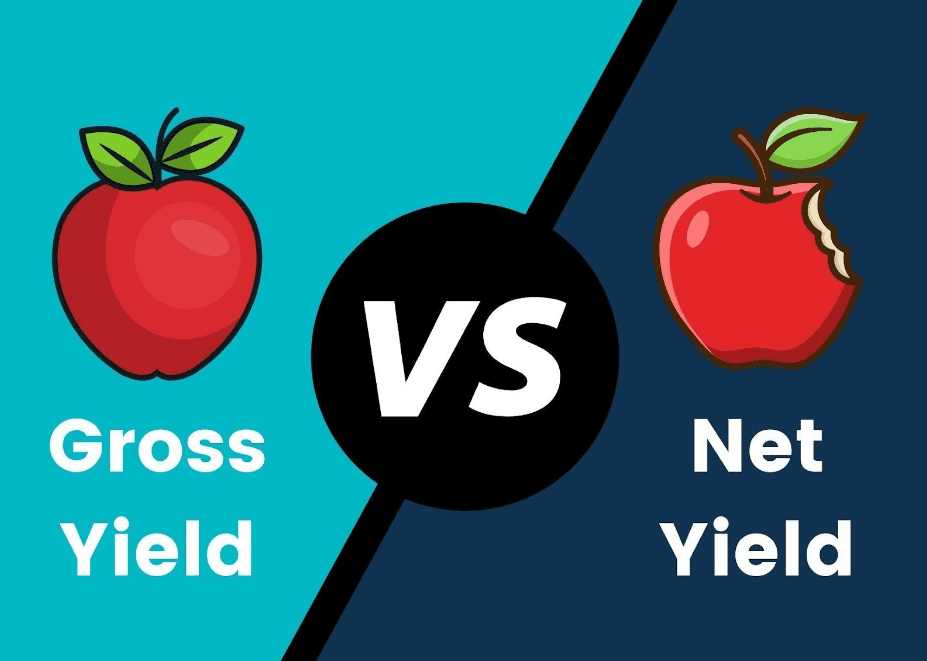We get asked about this all the time! What’s the difference between Gross and Net Yield? It’s a valid question, with two distinct answers. Let’s break it down.
First, let’s start with Gross Yield. Gross Yield is what you earn each year on your investment before any expenses or deductions are taken out. Simple enough, right?
Now, we’ll move on to Net Yield. Net Yield is what you actually take home each year after all of your investment expenses have been accounted for.
Make sense? Good! Let’s see how much of a significant role both types of yields playoff when looking at any real estate investment opportunity that you come across.
Why Is Yield Important?
Yield shows us the total income an investment generates over a set period, expressed as an annual percentage. This figure is important to investors as it lets them evaluate the rental return they’d potentially generate from their rental property and helps them determine whether it’s a suitable fit for their portfolio.
Unfortunately, many investment beginners eagerly take the bait that some companies toss out, luring them into believing that the gross yield is an accurate reflection of the property’s rental return. However, we want you to be a clever fish, so by knowing the difference between these yields, you’ll avoid such traps and find the best investment options in Dubai.
Gross vs Net Yield
While seeing a high gross yield may light up your face, this number doesn’t tell you the whole story. Principally, gross yield is the total rental return you’d receive from the tenant of a property before expenses are thrown into the mix. To work out this value, just sum up the total yearly rent that you’d charge a tenant, without deducting any fees, then divide that number by the property purchase price.
For example, if you’re charging your tenant an annual total of AED 70,000 and the property value is AED 800,000, then your gross yield is 8.75%. This number could easily catch out aspiring investors, which is where your net yield comes in.
Net yield is the rental income after deducting expenses – meaning this is exactly what ends up in your pocket! This is because when you purchase a residential property, as the owner, you’re obliged to pay the ongoing costs of maintaining and operating the property. These costs take into account things like property insurance, service charges, property management fees, upkeep costs, and so on. These have a significant impact on the actual yield to expect from renting out a property.
So, using the numbers from the previous example, let’s say the expenses totaled 15,000 AED. Therefore, the total value of rental income per year, including these expenses, would go from 70,000 AED to 55,000 AED. This means that the money you’d receive has dropped from a gross yield of 8.75% to a net yield of 6.875% – what a difference!

Why Is Net Yield More Accurate Than Gross Yield?
Even though a certain property may offer you a high gross yield, you won’t be seeing that number in your bank account. As you saw above, you could have a gross yield of 8.75%, but after factoring in the expenses that you’d be paying, your net yield decreased to 6.875 % – the latter being the number you’d find in your bank account. In some cases, you could even be faced with your property being vacant for a long period of time, accumulating ongoing maintenance costs. Such factors lower the net yield significantly on your property, as there’s no steady rental income yet the expenses are piling up, so it’s best to stay well aware of such risks.
Another thing to note is that expenses, like service charges, don’t scale linearly with rental income, as they are calculated on a property square foot basis instead. This means that the expenses are variable depending on the area of the property. Therefore, net rental returns are a much more reliable measure, as these are your exact profits with all the expenses proportionate to your investment taken out, showing how much money you actually end up with from an investment.
Conclusion
To become an informed investor and make smart investment decisions, you need to dig deeper to understand the difference between the gross and net yield. While both values are important, the net yield is ultimately the real rental return figure, and the number you, as an investor, should care about more.
One thing to keep in mind is that every investor has different objectives – be it capital gains, a steady flow of income, staying risk-free and safe – or even a combination of the three. If you’re looking to invest in a Dubai residential property, these goals can all be achieved by opting for real estate crowdfunding platforms, like SmartCrowd, to diversify your investment portfolio, minimize risk and potentially earn healthy returns.
Disclaimer: This blog is intended solely for educational purposes and shouldn’t be treated as financial advice. At SmartCrowd, we understand the importance of being transparent, which is why we suggest you always conduct thorough research, perform your own due diligence and consult with financial advisors to assess any real estate property against your own financial goals.






